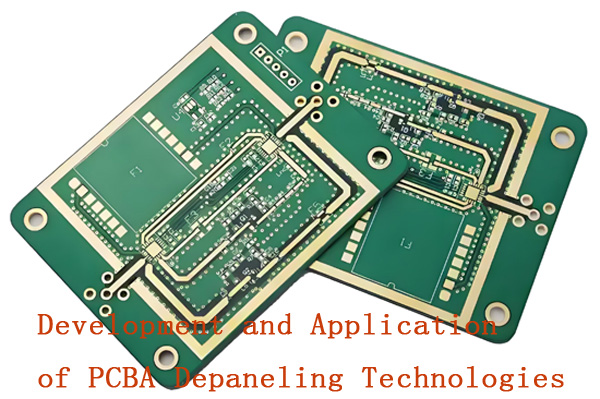When I first started learning how to design a PCB, I was overwhelmed with questions—from selecting the right software to preventing EMI issues. Every step felt like solving a complex puzzle. To help beginners like my past self, I’ve compiled this list of common PCB design questions, answered in clear and simple terms.
- Part 1. How to design a PCB for beginners?
- Part 2. How to choose PCB design software?
- Part 3. How to create a PCB schematic diagram?
- Part 4. How to place components on a PCB?
- Part 5. How to route PCB traces effectively?
- Part 6. How to choose PCB trace width?
- Part 7. How to design a PCB ground plane?
- Part 8. How to avoid EMI in PCB design?
- Part 9. How to design a PCB power supply layout?
- Part 10. How to design a multi-layer PCB?
- Part 11. FAQS about PCB Design
Part 1. How to design a PCB for beginners?
Start by learning the basics of electronics and circuit schematics. Choose beginner-friendly PCB design software (like KiCad or EasyEDA). Create your schematic, then place components logically, route traces, and follow design rules. Keep the layout simple and avoid high-speed or high-frequency designs for your first project. Double-check with a design rule check (DRC) before sending files for manufacturing.
Part 2. How to choose PCB design software?
Consider ease of use, available features, cost, and library support. Beginners often choose free tools like KiCad or EasyEDA. For professional needs, Altium Designer, OrCAD, or Eagle offer advanced features. Look for software that supports schematic capture, PCB layout, DRC, and Gerber file export.
Part 3. How to create a PCB schematic diagram?
Use your PCB software’s schematic editor to place components from the library. Connect them using nets (wires) according to your circuit design. Label important signals and add power/ground symbols. Check for missing connections or incorrect pin assignments before moving to PCB layout.
Part 4. How to place components on a PCB?
Group related components close together to minimize trace lengths. Place connectors and interface parts near board edges. Keep high-frequency parts away from sensitive analog circuits. Ensure enough spacing for soldering and heat dissipation. Follow manufacturer clearance guidelines.

Part 5. How to route PCB traces effectively?
Use short, direct traces to reduce resistance and interference. Keep power and ground traces wide. Avoid sharp 90° angles—use 45° bends instead. Route high-speed signals first and keep them away from noisy power lines. Use ground planes to improve signal integrity.
Part 6. How to choose PCB trace width?
Trace width depends on current capacity and allowable temperature rise. Use online PCB trace width calculators for accuracy. As a rule of thumb, 10–12 mils is common for low-current signals, while power traces may need 30–50 mils or more. Wider traces reduce resistance and heating.
Part 7. How to design a PCB ground plane?
Fill unused board space with a continuous copper ground plane to reduce noise and provide a low-impedance return path. Avoid splitting the ground plane unless separating analog and digital grounds. Connect ground planes with a single point to minimize ground loops.
Part 8. How to avoid EMI in PCB design?
Use a solid ground plane and keep loop areas small. Route high-speed signals over ground and avoid crossing split planes. Add decoupling capacitors close to IC power pins. Keep noisy and sensitive circuits physically separated. Use shielding if necessary.
Part 9. How to design a PCB power supply layout?
Place power components (regulators, capacitors) close together to minimize path length. Use wide traces or planes for power and ground. Place decoupling capacitors near ICs. Route high-current paths away from sensitive signals. Separate analog and digital power if needed.
Part 10. How to design a multi-layer PCB?
Use inner layers for ground and power planes to reduce noise. Place high-speed signals on outer layers adjacent to ground. Plan layer stack-up for controlled impedance. Keep via count minimal for high-speed traces. Use CAD software’s DRC to manage spacing and clearance.
Part 11. FAQS about PCB Design
How to design a high-speed PCB?
Use short, direct traces, controlled impedance, and proper termination. Separate analog/digital grounds and minimize crosstalk with spacing and ground planes.
How to design a PCB for RF circuits?
Use controlled impedance lines, keep RF traces short, use ground shielding, and match antenna impedance. Avoid sharp trace bends and isolate RF from noisy circuits.
How to check PCB design for errors?
Run your CAD software’s DRC (Design Rule Check), inspect clearances, trace widths, and missing connections. Review schematic against layout.
How to design a PCB for manufacturing?
Follow standard trace/spacing rules, use common component sizes, keep drill sizes within limits, and include fiducial marks for assembly.
How to choose PCB material for design?
Match material to application: FR4 for general use, Rogers for high-frequency, polyimide for flex. Consider dielectric constant, loss, and heat resistance.
How to design a PCB for thermal management?
Use thermal vias, copper pours, heat sinks, and component spacing. Place heat sources away from sensitive parts.
How to add test points in PCB design?
Place small pads or vias on key nets, spaced for probe access. Label them clearly in the silkscreen.
How to design a PCB for signal integrity?
Keep trace lengths matched, use controlled impedance, avoid stubs, and add terminations for fast signals.
How to design flexible PCBs?
Use polyimide substrate, curved trace paths, and wider spacing. Avoid vias in bend areas and keep copper balanced.
How to export PCB Gerber files?
In your CAD tool, use the CAM processor to generate Gerbers for each layer and NC drill files. Verify with a Gerber viewer.


